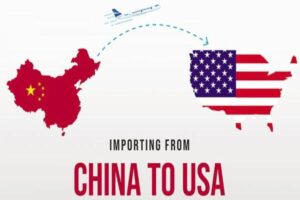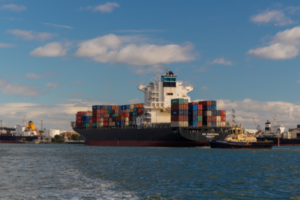Shipping clothes from China to the USA requires the right balance of cost, speed, and compliance. To ship successfully, importers must choose a suitable method (air, sea, or DDP), prepare export documents, meet labeling rules, clear customs, and ensure smooth door-to-door delivery.
Many importers face the same challenge: their Chinese suppliers are reliable, but the shipping process turns complicated — delayed customs clearance, unclear fees, and inconsistent delivery times. I’ve seen these issues repeatedly during my 12 years helping apparel importers at DFH Logistics.
In this guide, I’ll share how to ship clothes from China to the USA step by step — covering real methods, shipping times, costs, customs requirements, and proven solutions. After reading, you’ll know exactly how to move your clothing shipments efficiently and avoid the mistakes that cost others time and profit.
How to Ship Clothes from China to the USA (Quick Answer)

To ship clothes from China to the USA, you must confirm supplier readiness, prepare export documents, consolidate goods, and choose a suitable shipping method (air, sea, or DDP). Work with a reliable freight forwarder to handle customs clearance, duty payment, and final delivery.
Here’s the real step-by-step process followed by most successful apparel importers:
Confirm product details and labeling
Finalize specifications with your suppliers — including fabric composition, size ratios, packaging type, and quantity. Make sure each item carries a “Made in China” label and correct care instructions in line with U.S. Customs and Border Protection (CBP) requirements.Collect export documents
Request a Commercial Invoice, Packing List, and if needed, a Certificate of Origin. These are required for export declaration and U.S. import customs clearance.Deliver or consolidate goods at a warehouse
Many importers purchase from multiple suppliers. DFH Logistics provides free 30-day warehousing and consolidation at our Shenzhen facility, allowing you to combine all items into one shipment — cutting cost and simplifying paperwork.Choose your shipping method
- Express (DHL/UPS/FedEx): Ideal for samples or small urgent orders.
- Air Freight: Best for 50–300 kg shipments that need faster delivery.
- Sea Freight: Most cost-effective for bulk apparel shipments.
- DDP Door-to-Door: Fully managed service — taxes, customs, and delivery included.
(See also our article: EXW vs FOB vs CIF vs DDP for detailed explanation of each shipping term.)
Book shipping and complete export declaration
Your freight forwarder handles customs filing in China, books space on flights or vessels, and prepares the Air Waybill (AWB) or Bill of Lading.Handle U.S. customs and duties
For regular air or sea freight, your broker or importer must declare HS codes and pay duties.
With DDP shipping, DFH handles everything — duties, import taxes, and customs clearance — ensuring a smooth delivery process.Final delivery and inspection
Once cleared, your goods are delivered to your address, warehouse, or Amazon FBA center. Always inspect your shipment for quantity, labeling, and quality upon arrival.
In the following sections I will explain each part in detail — including methods, costs, timelines, and customs rules — so you can choose the best logistics plan for your clothing imports.
What Are the Shipping Methods for Clothes from China to the USA?

Clothes can be shipped from China to the USA by express courier, air freight, sea freight, or DDP door-to-door service — each method differs in speed, cost, and shipment size suitability.
When shipping apparel, the method you choose affects delivery time, cost structure, and customs handling. Below is an overview of each channel based on real operational data.
Express Shipping (DHL, UPS, FedEx)
- Best for: Samples or orders under 50 kg.
- Transit time: 3–7 days.
- Advantages: Fastest delivery with full online tracking.
- Limitations: Costly for bulk shipments; limited space during peak seasons.
- Typical cost: $6–$12 per kg.
(Express works perfectly for urgent restocks or high-value garments.)
Air Freight
- Best for: 50–300 kg shipments.
- Transit time: 7–12 days (door-to-door under DDP).
- Advantages: Balanced cost and speed, ideal for fashion cycles.
- Limitations: More expensive than sea freight, requires accurate customs documentation.
- Typical cost: $4–$8 per kg depending on season and route.
Sea Freight (LCL or FCL)
- Best for: Bulk orders or stable inventory.
- Transit time: 25–45 days depending on U.S. destination port.
- Advantages: Cheapest per-unit cost, suitable for large-volume apparel importers.
- Limitations: Long transit, requires customs and port handling.
- Typical cost: $1.5–$3 per kg or $2,000–$3,800 per container.
DDP Door-to-Door Shipping
- Best for: Importers who want a simple, all-inclusive solution.
- Transit time: 10–35 days (depending on whether shipped by air or sea).
- Advantages: Customs and duties prepaid, no U.S. importer registration needed.
- Limitations: Not suitable for restricted or branded goods without authorization.
| Shipping Method | Transit Time | Best For | Average Cost (USD) |
|---|---|---|---|
| Express Courier | 3–7 days | Samples, urgent orders | $6–$12/kg |
| Air Freight DDP | 8–12 days | Mid-size orders | $4–$11/kg |
| Sea Freight DDP | 25–40 days | Bulk orders | $1.5–$3.5/kg |
| FCL Sea Freight | 30–45 days | Full container loads | $2,000–$8,800/container |
For most apparel importers, Air Freight DDP and Sea Freight DDP are the best options — balancing speed, reliability, and cost. DFH Logistics provides both solutions with transparent pricing and full customs handling.
How Long Does It Take to Ship Clothes from China to the USA?

Shipping clothes from China to the USA usually takes between 3 and 45 days, depending on the shipping method. Express courier is fastest, while sea freight offers the lowest cost but longest transit time.
From my daily operations experience at DFH Logistics, here’s what you can expect for delivery time:
| Shipping Method | Estimated Transit Time | Notes |
|---|---|---|
| Express Courier | 3–7 days | Door-to-door, fastest option |
| Air Freight | 2–5 days | Balanced speed and cost |
| Air Freight (DDP) | 8–12 days | Balanced speed and cost |
| Sea Freight (DDP/LCL) | 25–40 days | Most economical for bulk shipments |
| FCL Sea Freight | 30–45 days | Suitable for large containers |
| Rail + Truck (to U.S. via Europe) | 25–30 days | Occasional route, limited capacity |
Factors Affecting Delivery Time:
- Seasonal congestion (especially before Chinese New Year and holidays)
- Port or airport capacity limits
- Customs inspections and document discrepancies
- Weather delays and route changes
To keep shipments on schedule, we always recommend booking space 2–3 weeks in advance and avoiding peak-season cutoffs. If you sell seasonal apparel, plan your imports at least one month earlier to avoid clearance delays.
For comparison, you can see general transit trends explained in our guide: How to Avoid Customs Delays When Shipping from China.
5. How Much Does It Cost to Ship Clothes from China to the USA?

Shipping clothes from China to the USA costs roughly $1.5–$12 per kilogram, depending on the method, shipment size, and destination. Sea freight is cheapest, while express courier is fastest but most expensive.
Below is a realistic cost overview based on DFH Logistics’ recent shipments:
| Shipping Method | Typical Cost (USD) | Weight Range | Delivery Time |
|---|---|---|---|
| Express (DHL/UPS/FedEx) | $6–$12 per kg | 1–50 kg | 3–7 days |
| Air Freight (DDP) | $4–$8 per kg | 50–300 kg | 8–12 days |
| Sea Freight (DDP) | $1.5–$3.5 per kg | 300 kg+ | 20–35 days |
| Full Container (FCL) | $2,000–$8,800 | 20ft/40ft | 15–30 days |
Main Factors Influencing Cost:
- Weight & Volume: Apparel is lightweight but bulky; packaging optimization saves money.
- Shipping Method: Air costs more, sea costs less but takes longer.
- Destination: East Coast vs West Coast ports have different surcharges.
- Season: Prices rise before major export peaks (Oct–Dec, Jan–Feb).
- Incoterms: Using DDP saves you customs and duty handling costs.
If you’re unsure which method fits your situation, check out our guide:
How to Get Accurate Shipping Quotes from China
How to Avoid Hidden Fees When Shipping from China
The Above price is just for reference, the exactly shipping price need to provide your shipment details, delivery address and pick up address, then we can quote for you reference right away.
What Documents and Customs Requirements Apply to Clothing Imports?

To import clothes from China to the USA, you need correct export documents, HS codes, and compliance with U.S. apparel labeling laws. DDP shipping simplifies the process since your forwarder handles customs clearance and duties for you.
Required Documents
- Commercial Invoice — includes product description, quantity, and value.
- Packing List — details weight, volume, and carton numbers.
- Bill of Lading / Air Waybill — proof of transport.
- Certificate of Origin — sometimes needed for duty assessment.
- Import Security Filing (ISF) — required for sea freight before loading.
U.S. Customs & Labeling Rules
- Each garment must display:
- Country of origin (e.g., “Made in China”)
- Fabric composition (cotton, polyester, etc.)
- Care instructions (wash, dry, iron)
- HS Codes (Chapter 61–62 of the Harmonized Tariff Schedule) determine duty rates.
- Most clothing items face duty rates from 8%–20%, depending on material.
You can confirm tariff rates through the official CBP Apparel Guidelines
Using DDP (Delivered Duty Paid) shipping can save time and prevent mistakes. DFH handles HS code classification, customs declaration, and duty prepayment, ensuring your shipment clears without delay.
For more guidance on compliance, read our article: Essential Customs Documents When Importing from China
7. Do You Need a Business License to Import Clothes from China?
You don’t need a business license to import clothes from China to the USA. Individuals can legally import as long as they comply with customs rules and pay import duties — especially when using DDP shipping.
In my years at DFH Logistics, I’ve worked with thousands of clients — from small online sellers to independent boutique owners — who import successfully without any company registration.
How It Works
- If your shipment value is under $800, it qualifies for Section 321, which means it’s duty-free and doesn’t require a customs bond.
- For higher-value shipments, customs duties must be declared and paid — this is fully managed by DFH under DDP terms.
- You’ll receive your clothing directly at your home, store, or fulfillment center without dealing with paperwork.
Tip: Even if you’re a new importer, we recommend only and always choose the DDP(door to door delivery) shipping and the EXW Incoterm
For more details, see our practical article:
Import from China Without a Business License.
How to Package Clothes for International Shipping?
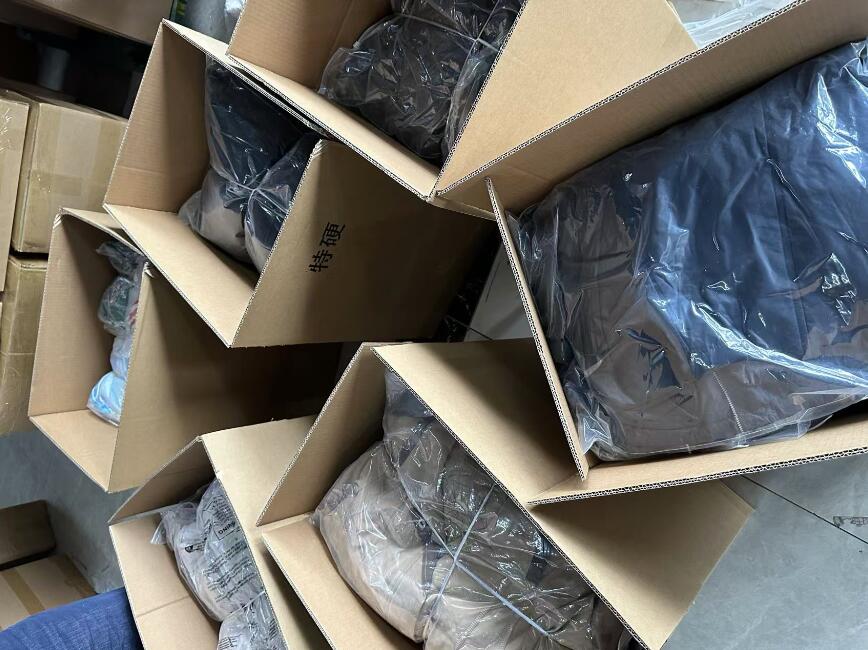
Proper clothing packaging ensures that your products stay clean, dry, and undamaged during international transit. Optimizing packaging size also helps reduce volumetric weight and shipping costs.
When shipping garments internationally, packaging is not just about protection — it’s also about efficiency. From my experience at DFH Logistics, small improvements in packing design can save importers up to 15% in total freight cost.
Best Packaging Practices
- Poly Bags: Ideal for individual garments. Always use sealed, moisture-proof bags.
- Carton Boxes: Use sturdy, double-wall cartons for bulk apparel. Label each carton clearly with item codes and sizes.
- Vacuum Packing: Effective for reducing space, especially for puffer jackets or bulky fabrics.
- Moisture Control: Insert silica gel packets to prevent mold during long sea transit.
Labeling & Barcoding
- Attach product labels, barcodes, or FBA codes if shipping to Amazon warehouses.
- For boutique orders, include SKU and color-size breakdown on each carton.
At DFH, we provide free repacking and labeling services in our Shenzhen warehouse. Before dispatch, our team checks each package, seals it securely, and ensures it meets customs standards.
Step-by-Step Process: How DFH Logistics Ships Clothes from China to USA
At DFH Logistics, we manage every step of your clothing shipment — from supplier pickup in China to door-to-door delivery in the USA. Our DDP system eliminates customs risks and hidden fees.
Here’s how our full-service apparel shipping process works in practice:
Pickup from Suppliers
We collect goods directly from your Chinese suppliers, factories, or trading companies.Warehouse Consolidation
Multiple orders? No problem. We consolidate them in our Shenzhen warehouse, providing free storage for up to 30 days and detailed product photos before shipping.Quality Check & Repacking
Our team checks carton condition, weight, and labeling. If needed, we repackage or relabel goods according to your instructions.Export Declaration
DFH handles export customs filing — even for suppliers without export licenses.Shipping (Air, Sea, or Express)
We arrange transportation under DDP terms, choosing the best route based on cost, size, and urgency.Customs Clearance & Duty Payment
We handle all import clearance, pay duties and taxes in advance, and provide full tracking updates.Final Delivery
Goods are delivered directly to your address, 3PL, or Amazon FBA warehouse. Proof of delivery and invoice summary are provided for your records.
By integrating all steps into one service, DFH saves importers both time and cost — and ensures every clothing shipment arrives smoothly and legally.
10. How to Reduce Shipping Costs for Clothing Imports

To reduce shipping costs for clothing imports, consolidate orders, optimize packaging, and plan shipments during off-peak seasons. Choosing DDP shipping often provides the most cost-effective total solution.
Here are proven strategies I recommend to our clients:
Consolidate Shipments
Combine goods from multiple suppliers into one consolidated shipment to avoid paying multiple minimum freight charges. DFH provides free consolidation and 30-day storage to help you do this efficiently.Book Early & Ship Off-Peak
Rates rise before Chinese New Year and Christmas. Booking 2–3 weeks early secures better prices and avoids delays.Optimize Packaging Volume
Vacuum or fold garments tightly to reduce dimensional weight charges.Compare Air vs. Sea Freight Wisely
For goods under 300 kg, air freight DDP is cost-effective. For bulk, sea freight DDP saves up to 60%.Negotiate Long-Term Rates
Regular shippers can secure stable annual pricing with forwarders like DFH.
You can read our detailed guide on 15 Tips to Reduce Shipping Costs for more examples and calculations.
11. Common Mistakes to Avoid When Shipping Clothes from China

Most shipping problems happen due to incorrect HS codes, missing documents, or unreliable freight agents. Avoiding these mistakes ensures faster customs clearance and lower total cost.
From years of experience, here are the errors I see most often:
- Wrong HS Code or Misdeclared Value: Leads to customs penalties or delayed clearance.
- Incomplete Labeling: Apparel without “Made in China” or care labels may be held by CBP.
- Unverified Freight Forwarders: Low-cost agents sometimes disappear after pickup.
- Ignoring Import Duties: Many importers forget to factor taxes into total landed cost.
- Poor Packaging: Cartons collapsing during sea transport result in damaged garments.
A professional logistics partner ensures none of these happen. If you’re unsure how to verify a company, read our article How to Identify Fake Freight Forwarders in China for safety tips.
12. Why Choose DFH Logistics for Shipping Clothes from China to the USA
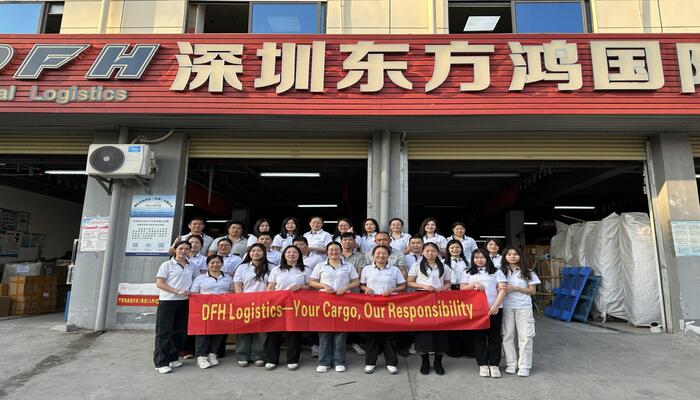
DFH Logistics specializes in shipping apparel and textile products from China to the USA with reliable, transparent DDP door-to-door service.
Our Key Advantages
- 12+ Years of Apparel Shipping Experience: Trusted by thousands of importers, Amazon sellers, and fashion brands.
- All-Inclusive DDP Solutions: We manage pickup, export clearance, customs, duty payment, and delivery — no extra fees later.
- 30 Days Free Warehouse Storage: Ideal for buyers consolidating from multiple factories.
- Customized Packaging & Labeling: Meets U.S. retailer or FBA standards.
- Real-Time Tracking & Dedicated Support: Our English-speaking logistics team updates you at every step.
Client Example:
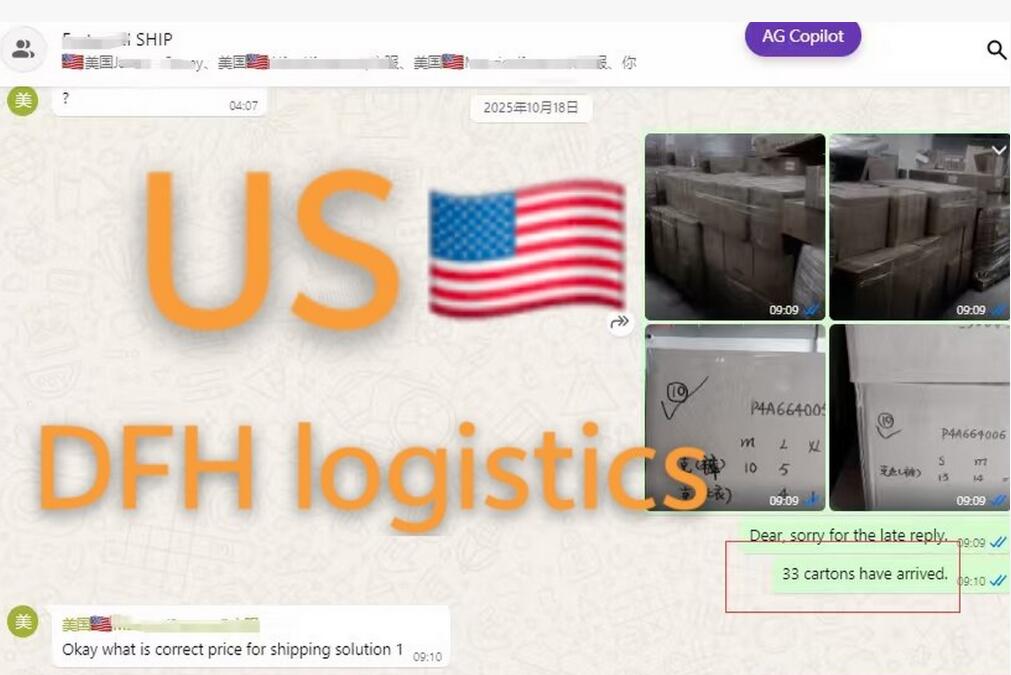
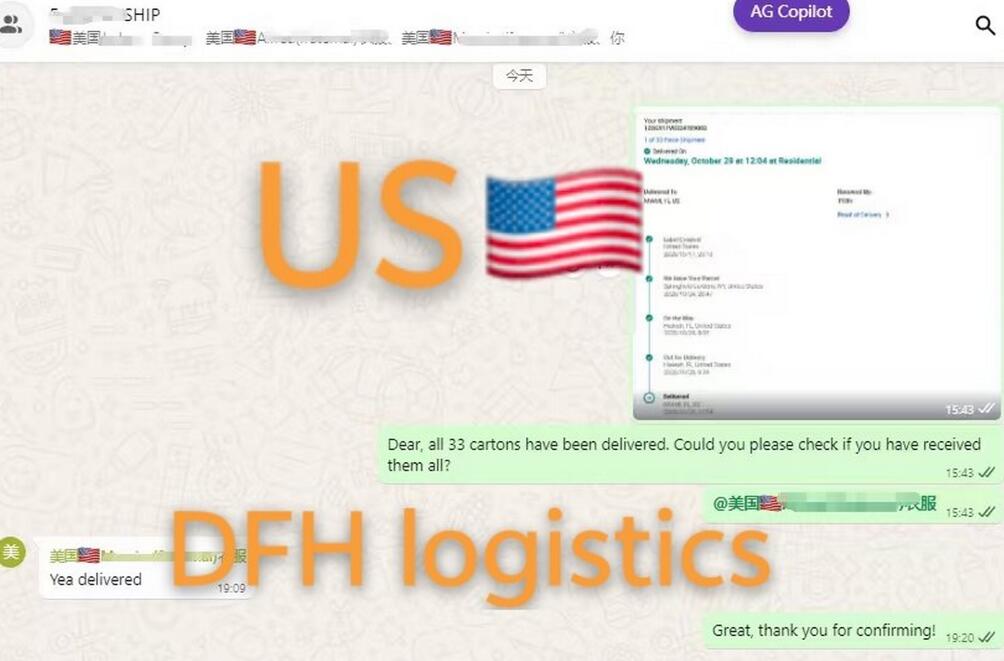
13. Conclusion
Shipping clothes from China to the USA can be simple and profitable when managed properly. The key is choosing the right shipping method, preparing documents correctly, and partnering with an experienced freight forwarder.
By now, you should clearly understand every step — from supplier coordination and packaging to customs clearance and delivery. Whether you’re an individual buyer or a professional importer, DFH Logistics makes the process seamless through our DDP door-to-door solutions.
If you’re planning your next apparel shipment, contact DFH Logistics today for a free quotation and personalized advice on the most cost-effective route for your clothing imports.



